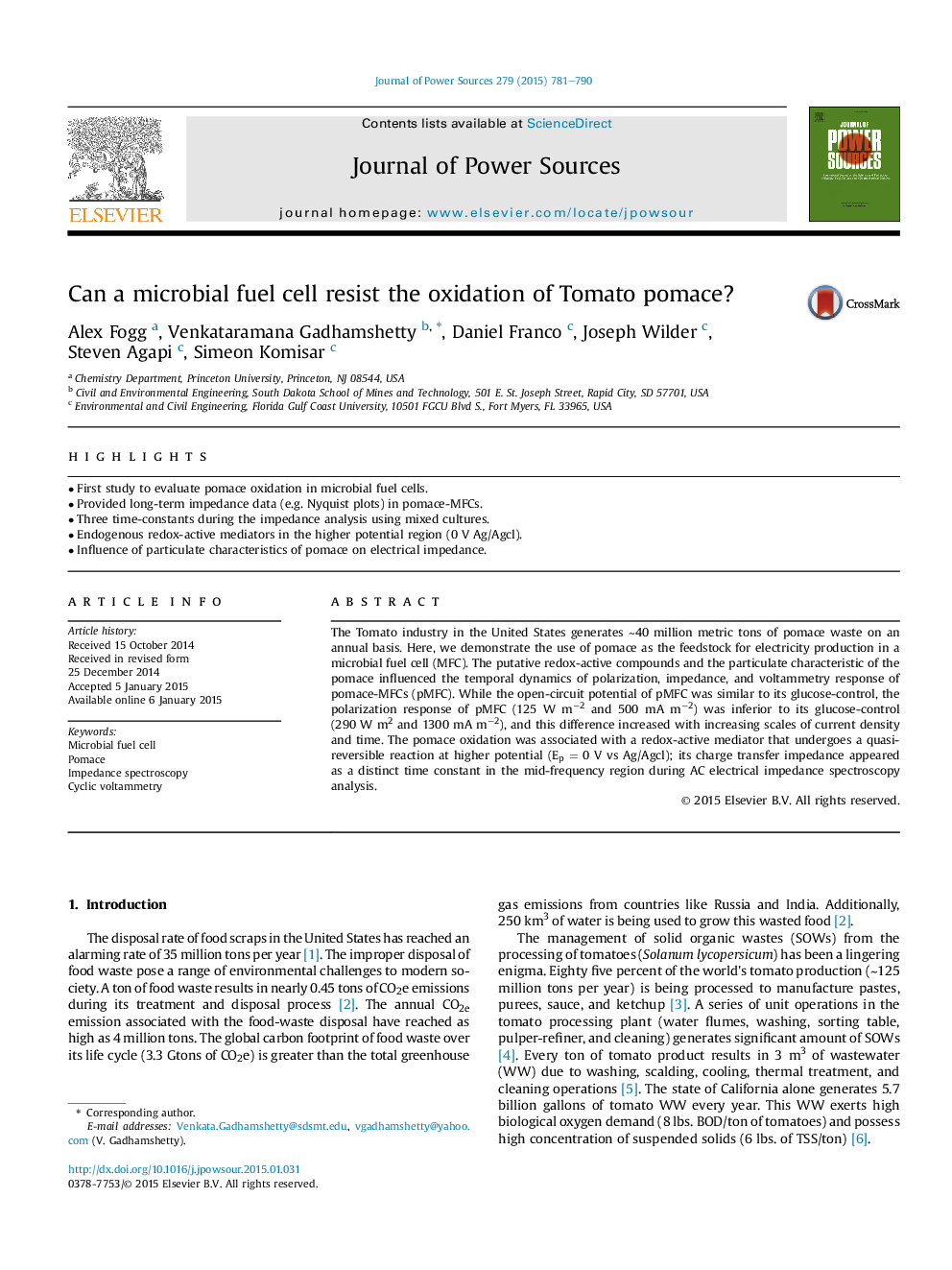| Article ID | Journal | Published Year | Pages | File Type |
|---|---|---|---|---|
| 7733438 | Journal of Power Sources | 2015 | 10 Pages |
Abstract
The Tomato industry in the United States generates â¼40 million metric tons of pomace waste on an annual basis. Here, we demonstrate the use of pomace as the feedstock for electricity production in a microbial fuel cell (MFC). The putative redox-active compounds and the particulate characteristic of the pomace influenced the temporal dynamics of polarization, impedance, and voltammetry response of pomace-MFCs (pMFC). While the open-circuit potential of pMFC was similar to its glucose-control, the polarization response of pMFC (125 W mâ2 and 500 mA mâ2) was inferior to its glucose-control (290 W m2 and 1300 mA mâ2), and this difference increased with increasing scales of current density and time. The pomace oxidation was associated with a redox-active mediator that undergoes a quasi-reversible reaction at higher potential (Ep = 0 V vs Ag/Agcl); its charge transfer impedance appeared as a distinct time constant in the mid-frequency region during AC electrical impedance spectroscopy analysis.
Related Topics
Physical Sciences and Engineering
Chemistry
Electrochemistry
Authors
Alex Fogg, Venkataramana Gadhamshetty, Daniel Franco, Joseph Wilder, Steven Agapi, Simeon Komisar,
